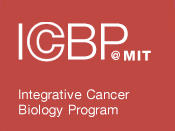| Title | O6-Methylguanine DNA lesions induce an intra-S-phase arrest from which cells exit into apoptosis governed by early and late multi-pathway signaling network activation. |
| Publication Type | Journal Article |
| Year of Publication | 2012 |
| Authors | Noonan, EM, Shah, D, Yaffe, MB, Lauffenburger, DA, Samson, LD |
| Journal | Integr Biol (Camb) |
| Volume | 4 |
| Issue | 10 |
| Pagination | 1237-55 |
| Date Published | 2012 Oct |
| ISSN | 1757-9708 |
| Keywords | Antineoplastic Agents, Apoptosis, Base Pair Mismatch, Cell Cycle, Cell Death, Cell Line, DNA, DNA Damage, DNA Repair, DNA Replication, Dose-Response Relationship, Drug, Gene Expression Regulation, Neoplastic, Guanine, Humans, Neoplasms, S Phase, Signal Transduction |
| Abstract | The O(6)-methylguanine (O(6)MeG) DNA lesion is well known for its mutagenic, carcinogenic, and cytotoxic properties, and understanding how a cell processes such damage is of critical importance for improving current cancer therapy. Here we use human cells differing only in their O(6)MeG DNA methyltransferase (MGMT) or mismatch repair (MMR) status to explore the O(6)MeG/MMR-dependent molecular and cellular responses to treatment with the methylating agent N-methyl-N'-nitro-N-nitrosoguanidine (MNNG). We find that O(6)MeG triggers MMR-dependent cell cycle perturbations in both the first and second cell cycle post treatment. At lower levels of damage, we show that a transient arrest in the second S-phase precedes survival and progression into subsequent cell cycles. However, at higher levels of damage, arrest in the second S-phase coincides with a cessation of DNA replication followed by initiation of apoptotic cell death. Further, we show that entry into apoptotic cell death is specifically from S-phase of the second cell cycle. Finally, we demonstrate the key role of an O(6)MeG/MMR-dependent multi-pathway, multi-time-scale signaling network activation, led by early ATM, H2AX, CHK1, and p53 phosphorylation and followed by greatly amplified late phosphorylation of the early pathway nodes along with activation of the CHK2 kinase and the stress-activated JNK kinase. |
| DOI | 10.1039/c2ib20091k |
| Alternate Journal | Integr Biol (Camb) |
| PubMed ID | 22892544 |
| PubMed Central ID | PMC3574819 |
| Grant List | CA014051 / CA / NCI NIH HHS / United States CA055042 / CA / NCI NIH HHS / United States CA112967 / CA / NCI NIH HHS / United States ES002109 / ES / NIEHS NIH HHS / United States P30 ES002109 / ES / NIEHS NIH HHS / United States R01 CA055042 / CA / NCI NIH HHS / United States |
